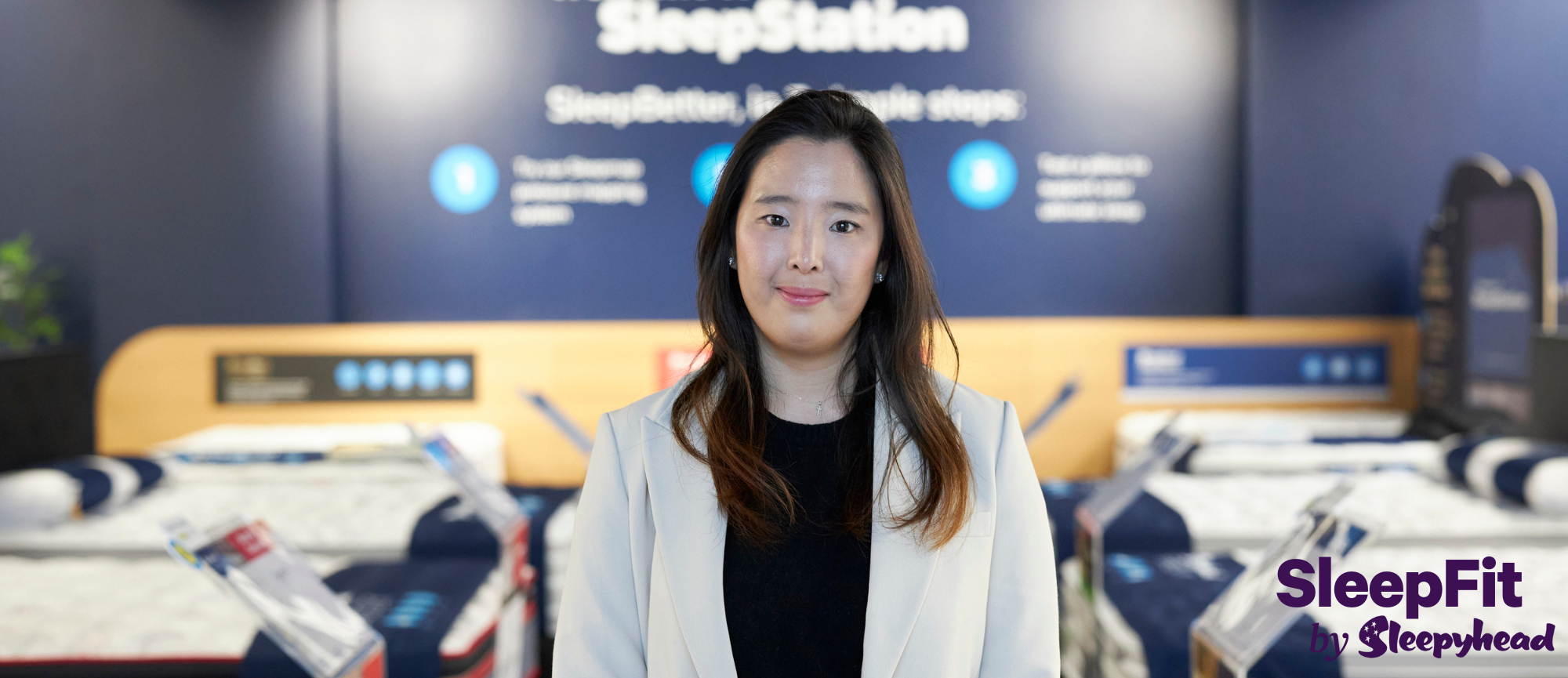
What Is a Good Work-From-Home Routine? (The SleepFit Diaries: Kristie)
Welcome to our series, The SleepFit Diaries. Sleep is crucial for our physical and mental health, yet so many of us struggle to get enough quality rest. That’s why in 2022, we teamed up with Sleep Coach, Bernice Tuffery, to launch our SleepFit Programme, helping five lucky Kiwis achieve better sleep habits. From practical tips to insightful advice, read on to discover how you too can get sleep fit and wake up feeling refreshed and energised.
Sleep offers the body and brain time to restore and recover, and for over 60 per cent of Kiwis to be missing out on their best sleep is not good enough. So, we’ve introduced the SleepFit Programme, designed to help Kiwis unlock their best sleep with better sleep solutions and tips.
Before joining the SleepFit Programme, our sleeper Kristie had trouble getting a full night’s sleep due to partner disturbance. In addition, she and her partner experienced mismatched comfort levels, battling over the perfect temperature when sleeping.
After three weeks with her brand-new Sleepyhead bed, Kristie has found the solution to all her sleep issues.
Combining our bed specialist’s expertise and SleepMap technology, we found the perfect mattress match for Kristie. The Swisstek Elite. Her new bed features KülKōte technology that regulates her and her partner’s body temperature for a more comfortable sleep. The Swisstek Elite is also crafted from a unique spring system to minimise partner disturbance.
“Single best thing about my new bed? There’s almost zero partner disturbance! My partner moves around a lot during his sleep, which has always been an issue for me. With my new Sleepyhead bed, I wake up far less from him moving at night.”
Working from home for most of the week means that Kristie is often in her bed during the day and, as a result, frequently experiences swelling in her legs. To help, we also matched Kristie to a Sleepyhead adjustable base so she can use her bed as a sofa with complete support and comfort.
“Being able to switch quickly between a flat position for sleep and an elevated position for other tasks such as reading or using my laptop is a big plus. When I have swollen legs, I simply elevate the bottom of my mattress to soothe the pain and help me fall asleep at night.”
From her sleep coaching sessions with Bernice Tuffery, Kristie has learnt that to improve the quality of her sleep, it’s not just the moments right before bed that are important but also the way you structure the rest of your day.
Bernice says that working from home can disrupt our daily routine, and we may not be conscious of the impact it has on us until our sleep unravels.
“Pre-Covid, Kristie’s out-of-home work routine included getting up early, getting dressed, making her bed, going outside and walking to public transport to get to work. These simple morning activities supported her circadian rhythm – they got ‘wakefulness’ underway early in the day. In addition, being up and moving helped elevate her body temperature and being outside with natural light reduced her melatonin – the sleepiness hormone.”
“In a busy and spacious work environment, Kristie enjoyed a lot of mental and physical stimulation as well as social engagement and connection. So, by evening, her body was ready for a good night’s sleep.”
Once Kristie understood what her body needed to support her sleep, she integrated some simple changes into her work-from-home routine.
“She used a consistent sleep schedule to get going earlier in the day. She added a morning walk to boost her body temp and switched off her melatonin early in the day. She conscientiously booked social contact and activities she enjoyed, keeping life vibrant and exciting. Understanding and working with her biology, she learned how to fill her days in ways that supported her circadian rhythm and set her up for a good night’s sleep.”




